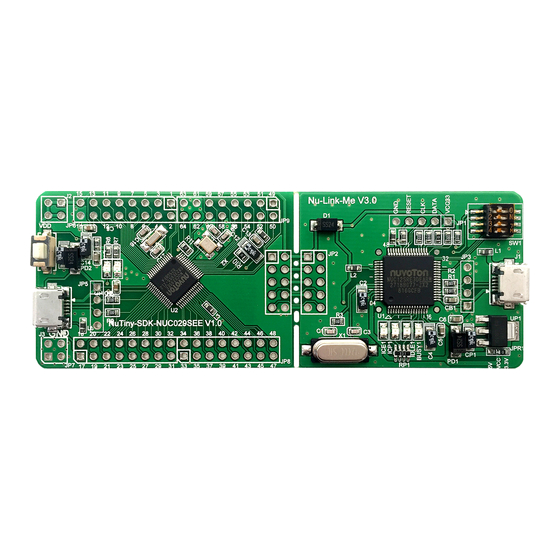
Nuvoton NuMicro NUC029 Series Manuals
Manuals and User Guides for Nuvoton NuMicro NUC029 Series. We have 1 Nuvoton NuMicro NUC029 Series manual available for free PDF download: Technical Reference Manual
Nuvoton NuMicro NUC029 Series Technical Reference Manual (497 pages)
32-bit Arm Cortex-M0 Microcontroller
Brand: Nuvoton
|
Category: Microcontrollers
|
Size: 5 MB
Table of Contents
Advertisement
